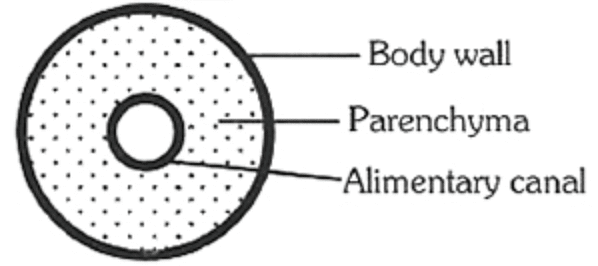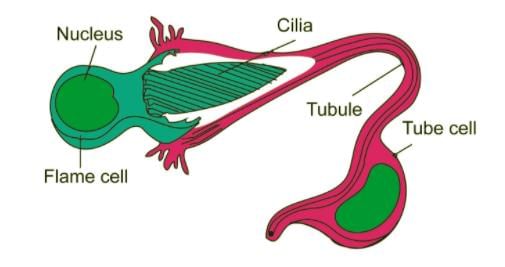Test: Animal Kingdom - NEET MCQ
25 Questions MCQ Test - Test: Animal Kingdom
The phylum in which adults exhibit radial symmetry and larva exhibit bilateral symmetry is:
Assertion (A): Arthropods exhibit an open circulatory system.
Reason (R): In an open circulatory system, blood flows freely within body cavities
Assertion (A): Nematodes are pseudocoelomates.
Reason (R): Pseudocoelomates have a body cavity that is not fully lined with mesoderm.
Which one of the following group of animals is correctly matched with its characteristics without any exception?
Which organ in molluscs is used for feeding and is described as a "file-like rasping organ" ?
Which of the following statements correctly describes the presence of the notochord in Urochordata and Cephalochordata?
Assertion (A): All members of the phylum Echinodermata are exclusively marine.
Reason (R): The water vascular system of echinoderms is adapted specifically for life in marine environments.
The cross-section of the body of an invertebrate is given below. Identify the animal which has this body plan.

Which group of chordates possesses a sucking and circular mouth without jaws?
What is the term for specialized cells in flatworms that assist in osmoregulation and excretion?
(a) Metagenesis is observed in Helminths.
(b) Echinoderms are triploblastic and coelomate animals.
(c) Round worms have organ-system level of body organization.
(d) Comb plates present in ctenophores help in digestion.
(e) Water vascular system is characteristic of Echinoderms.
Options:
Match the following genera with their respective phylum:
Column I Column II
(a) Ophiura (i) Mollusca
(b) Physalia (ii) Platyhelminthes
(c) Pinctada (iii) Echinodermata
(d) Planaria (iv) Coelenterata
Options:
Match the following columns and select the correct option:
Column I Column II
(a) Aptenodytes (i) Flying fox
(b) Pteropus (ii) Angel fish
(c) Pterophyllum (iii) Lamprey
(d) Petromyzon (iv) Penguin
Column I | Column II
I. Placoid Scales | 1. Chondrichthyes
II. Ctenoid scales | 2. Osteichthyes
III. Ectoparasites | 3. Hemichordata
IV. Proboscis gland | 4. Cyclostomata
Codes:
Read the following statements:
i) Spider and mosquito possess compound eye
ii) Jelly fishes possess cnidoblasts but comb-jellies lack them.
iii) All animals having true coelom are characterized by the presence of bilateral symmetry usually, tube-within-tube body plan, presence of mesoderm and true segmentation
iv) The animals of the phylum Porifera have originated from colonial protozoans.
Which of the above statements are correct?
(i) True coelom is a body cavity which arises as a cavity in the embryonic mesoderm.
(ii) Digestive cavity is found in acoelomates, pseudocoelomates as well as coelomates.
(iii) The body cavity of arthropods and non-cephalopod molluscs is called haemocoel.
(iv) Aschelminthes possess true body cavity.
(v) There is no cavity between the body wall and gut in Echinoderms.
Which of the statements are correct?






















